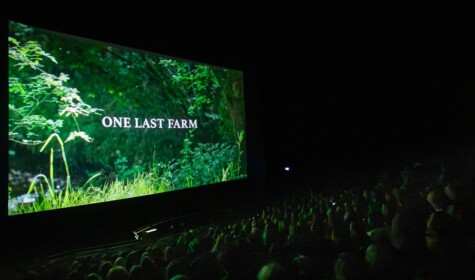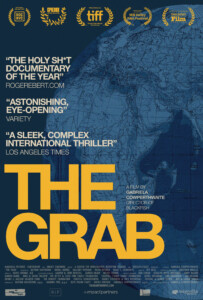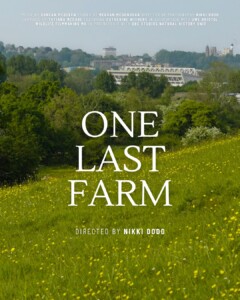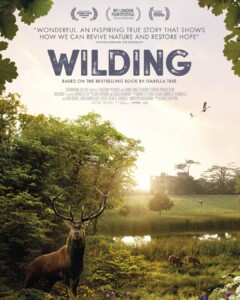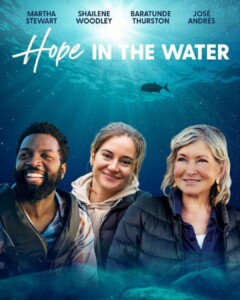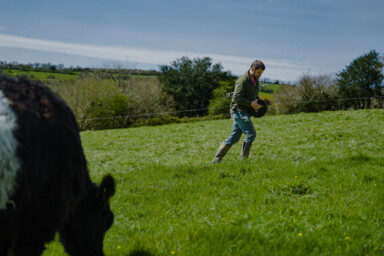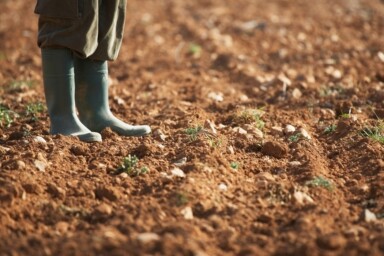Our food & farming reviews of 2025 are here – what’s been cropping up this past year and worth watching?
The Grab
Directed by: Gabriela Cowperthwaite
Where to watch: Available to rent or buy via select streaming services. For anyone interested in hosting a screening of The Grab, please contact ROCO films to find out more, at contactus@rocofilms.com.
The Grab is a must-see film for anyone interested in the shape of things to come as we face climate change and all that it will bring. The future does not look friendly and across the globe a land grab is slowly and quietly mapping terrain that will benefit the rich and powerful and devastate the poor. “The priority is not the people,” says one commentator and this is played out around the world.
The Center for Investigative Reporting has been tracking what’s been happening over the last decade or more – a growing contingent of companies and countries that are buying up land in places where there are ample and available resources, especially water.
China, in particular, is concerned with the future of their food and water having lived through the Great Chinese Famine – three devastating years between 1959 and 1961. The impact of the famine led to an ongoing concern for the food security of China that continues to this day. In response to these concerns, the Chinese government is exploiting Africa’s land and water, like many other countries with depleted or limited resources.
What results from these land grabs is the loss of land, water and valuable resources taken from small communities and countries around the world that have been pushed aside and pillaged by bigger corporate and governmental interests, slowly creating a world of have and have nots – an imbalance that may generate future global wars. “It’s inequity. It’s seeding future conflict. It’s destabilising the world,” says lead reporter Nathan Halverson. The situation as portrayed in The Grab urges us to be wary of what lies ahead.
One Last Farm
Director: Nikki Dodd
Where to watch: Details of upcoming screenings will be available here. Alternatively, if you’d like to host a screening, you can contact Nikki to find out more.
One Last Farm is the story of Yew Tree Farm – the last working farm in Bristol, England. Over the past half century or more, farming has disappeared from the city. Catherine Withers has been fighting hard for 22 years now to keep the farm going, facing an array of threats to its existence during that time. The farm is small with a remarkably diverse array of landscapes – woodland, ancient meadows, a stream that runs through the farm drawing a broad range of creatures and birds. The farm is now a Site of Nature Conservation Interest and a testament to the value of farming with nature.
Withers does not own all of the land on the farm, and this has left her vulnerable. She’s already lost 13 acres to a private landowner and now the city of Bristol wants to take back 20 acres that have been leased to Yew Tree Farm since the 1960s. The potential impact on the farm’s wildlife could be devastating and concern for this is ongoing.
Catherine is in for the long fight and she’s got a growing band of supporters who share her concerns. There isn’t an end yet to her travails, but the film is a reminder of how easily things can be lost and that they are worth fighting for.
Sadly, while Catherine Withers has fought fiercely for years to keep Yew Tree Farm as it has been, she has agreed to reaching a settlement with other family members that means she will ultimately leave her residence on the farm.
The number of farms in urban fringes has decreased considerably over the last decade and it is unclear what will ultimately happen to Yew Tree Farm. The demands of growing cities are increasingly impinging on farmland. That Yew Tree Farm has survived as long as it has, is, in many ways, a testament of Catherine’s commitment to the land and its creatures.
Heal the Land
Directed by: Tom Francome and Hayley Smith
Where to watch: Heal the Land will be screening at TCN, Newark Works in Bath on Thursday 8th May – click here for more information.
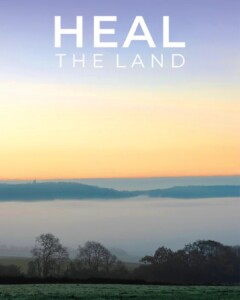 Within the first few minutes of Heal the Land, we’re told that England is one of the most nature-depleted countries on Earth. England ranks in the bottom 3% of 240 countries and territories – a statistic that reveals the tragic plight of much of the country’s wildlife. But Heal the Land isn’t a story about despair and loss, rather, it’s one about optimism, determination and reasons to feel hopeful for the future of nature in England.
Within the first few minutes of Heal the Land, we’re told that England is one of the most nature-depleted countries on Earth. England ranks in the bottom 3% of 240 countries and territories – a statistic that reveals the tragic plight of much of the country’s wildlife. But Heal the Land isn’t a story about despair and loss, rather, it’s one about optimism, determination and reasons to feel hopeful for the future of nature in England.
The film tells the story of Heal Rewilding’s journey to restore a 460-acre site in the Somerset countryside. Formerly a hunting forest in the 14th century, the land is now a grasslands site, home to trees, hedges, rivers and an array of wildlife.
Dan, a young ranger at Heal Rewilding sets up camera traps along one of the rivers on the land in hopes there may be beavers, and reviewing the footage, finds indeed that not just one but two beavers are working away on a den. He shares the footage he’s captured with Ruby who oversees Heal Rewilding’s communications and social media work. Like Dan, when she sees the beaver, she’s ecstatic and the passion and excitement at seeing even a glimpse of the wildlife onsite is not only infectious but reassuring – there is a next generation enthusiastic, engaged and inspired about restoring nature.
Heal the Land serves as an exciting and accessible entryway for anyone hoping to find out more about rewilding and the small things we can all do to help support and restore nature. It evidences the potential of what can be realised, given care and commitment. With the US President’s attack on climate policy, the rollback of SFI payments in England and the steep decline in global wildlife, it can be difficult to stay hopeful, but what Heal Rewilding is doing to restore and revive nature on its Somerset land makes a difference.
Now what we need, is to see this sort of hope and enthusiasm applied to nature-friendly farming practices to ensure that nature is respected and supported as a vital, integral and valuable part of what farmers do.
Wilding
Director: David Allen
Where to watch: Available to stream on BFI Player.
The story of the Knepp estate, is a story of renewal and regeneration and one that is deeply inspiring. Coming from a background of industrial farming, Isabella Tree and Charlie Burrell tried for years to make the family farm viable, but it wasn’t until they completely turned away from how they were farming, that things began to change on the estate. Starting with the estate’s ancient Oak trees, they began to recognise how their industrial farming practices were damaging the land, damaging the wildlife and much more.
Early on in the film, Charlie comments, “What we were seeing in the early stages was absolutely no sign of anything – and that was a real ‘wow’. What had we been doing before? What were we thinking…that feeling of guilt…we have presided over a period of real destruction and we need to think again…” The realisation was transformative as Charlie and Isabella began a kind of rewilding of the land in a way that embraced both farming and nature, allowing both to thrive.
It takes some extraordinary bravery (not to mention quite a bit of cash) to realise the transformation of Knepp into such an extraordinary site. But there are real lessons to be learned from the project – the most important is that farming and nature can co-exist in ways that are beneficial to both, if the land is cared for organically and holistically. Charlie and Isabella sought to step outside of the proverbial box, in order to realise something far more meaningful – that we share this world with myriad other creatures without whom, we would instigate our own demise.
Hope in the Water
Director: Brian Peter Falk
Where to watch: Hope in the Water is currently unavailable to stream in the UK – for the latest updates, click here.
This PBS series which started running in 2024, tracks the potentiality of the sea to feed us more sustainably. It’s a big ask in this day and age, when seabeds are regularly dredged and most fish are in significant decline. It takes looking well outside of the box to see what might be possible – and this is exactly what Hope in Water is about. Can our oceans and waters offer us a greater range of foods, without us inflicting greater damage upon them? And what alternative foods can sustainable aquaculture offer?
The series starts with shrimp – one of the most popular seafoods, eaten widely across the globe – and tracks a broad range of issues affecting fishing and fisheries and how to move to more sustainable practices. In the US, the Gulf of Mexico has long been laced with hatcheries along the coasts of Louisiana, Mississippi and Florida, but the devastating impact of run-off from the Mississippi delta has made this increasingly difficult. However, there are alternatives for shrimp production, to be found, remarkably, in Minnesota. Farmer Paul Danhof started producing salt water shrimp when his parents shut down their dairy business. It’s an unconventional transition, but one that has become successful.
The fishermen and fisherwomen in the series are looking for ways to preserve the bounty of what the sea offers without destroying it. And this is surprisingly easy to do in many cases – take the purple ‘zombie’ sea urchins that overrun the shallow seabed off the California coast to their detriment. These completely edible urchins have not the kudos of the larger red urchins, but they are phenomenally plentiful and harvesting them keeps the seabed in balance.
It’s imperative that if we want to save our fish stocks and seafood, we eat more diversely – kelp, for example, is a hugely nutritious food and it can be delicious, and dog fish are plentiful and tasty. But key here is that we must keep sustainability at front the of our minds if we are to avoid inflicting yet more damage upon the world’s oceans in our search for food.
Featured image courtesy of Rob Carmier.
